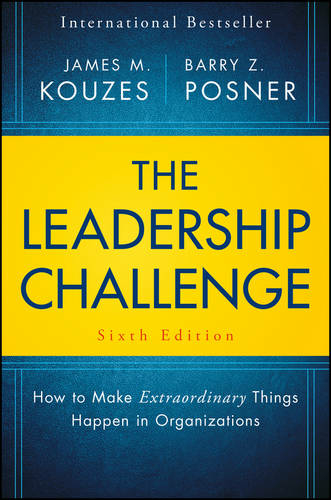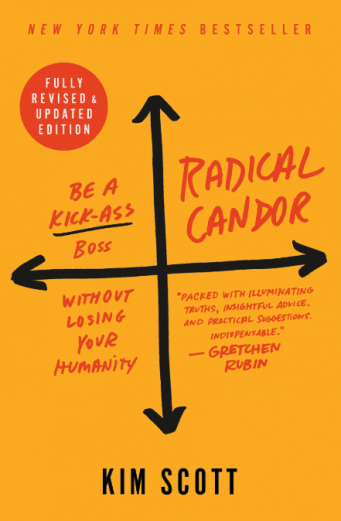Whether or not you’re already in a senior design role, you may be looking at taking on a design leadership role at some point in your career. And though it’s fairly typical - not just in the world of UX design, but in pretty much all industries - that people become “leaders” having first been “practitioners”, it can be a difficult transition.
Your skills as an expert in your field - the ones you learned as a practitioner - aren’t the same ones that you need to be a good leader. You’re going to need to learn a new set of skills as it’s true what they say: “What got you here, won’t get you there!”.
It’s important to note at this point that whatever your current job title is, you can be a leader. When you become a leader, you’ll find you need a new set of skills - some of which will come a lot more naturally to you than others - and you’ll need to find a way to fill those gaps.
So in this post, we’re going to take a look at exactly what those (new) skills are and why you’re going to need them. Plus, I’ll share links to some of the most valuable resources that I’ve come across throughout my career that you might also find help with your own upskilling and understanding as you start your own journey into design leadership.
General leadership skills for designers
It almost goes without saying that for any leader, you’re going to need strong general leadership skills. This is especially so when it comes to leading creative teams and you’ll need to be prepared to inspire those around you and shape the direction (That’s the true role of a leader, after all.)
I find the Leadership Challenge’s Five Practices of Exemplary Leadership® model provides a great framework for understanding how to be an effective leader. Here’s my take on each of them:
1. Model the way
Being a good leader is about practicing what you preach. People will know how you act and this sets the culture and sets off a chain reaction.
Remember to be a good example and set the standards of expectation of how you want others to follow.

Making Ideas Happen: Overcoming the Obstacles Between Vision and Reality
This handy book explores the techniques used by the ‘serial creatives’ that seem to effortlessly turn vision into reality. It talks you through how to learn the skills you need in order to effectively execute on your ideas and is a great read to help you get started on your leadership journey.
2. Inspire a shared vision
Write a vision of what success looks like to you in one and three years from now and what your mission is, stating what you are here to do. (I found this activity really helped to clarify my thoughts ). Then, get others to actively engage in these ideas.
Communicate your vision so clearly that those around you can effectively pass on the message to others too. You’ll need others to co-create and buy-in into this vision - it’s the only way you’ll get others to follow you.
3. Challenge the process
Look for “the best” - be that processes, people, or something else - and challenge the status quo. Be prepared to take risks. Get used to getting out of your comfort zone on a regular basis.
Asking myself “What would you do if you weren’t afraid?” has helped me identify the limits of my own comfort zone and the true reason for my concerns before taking action.
You’re moving in a direction that others may not be used to and there may be hesitation, pushback and even hostility at times. But don’t let that dishearten you and be prepared to keep going.
You’ll only achieve change by changing how people think (not just changing the process).
4. Enable others to act
There is a big misconception over what a leader is (or is not). It is often thought that, as a leader, you can “do what you want to do”, but this is not the case in reality.
People will believe in certain things you say, but will only act on what they believe in. Your job as a leader is to influence them into believing in the same things as you do.
People need to own the idea, so co-creation is also key here. Don’t expect people to do things how you do things; but do bring them along for the ride by communicating the intent (i.e. what you’re trying to achieve). It can be quite surprising how often what people come up with is better than what you’d have come up with on your own!
5. Encourage the heart
Choose a topic that you’re passionate about. Be prepared to talk to people to get them engaged. If you’re passionate about something, your natural level of energy will shine through which can make it hard not for the person you’re talking with to also become enthused.
Understand what people care about and then speak their language, in a way they understand.

The Leadership Challenge: How to Make Extraordinary Things Happen in Organizations
If you want to learn more about the ‘Five Practices’ (or are generally interested in developing yourself in a design leadership capacity), then I highly recommend having a read of this book which explores in great detail the individual elements of being a leader.
Communication skills for design leaders
Strong communication skills are another key area that any (budding) design leader will need to possess if they are to be a success. Not only when it comes to communicating with your direct team, and others in the wider business, but also with any other - potentially external - stakeholders too.
When we work with people very different to ourselves, it can be difficult to communicate and be understood. For people to listen, you need to talk in a way they can engage.
Understanding communication styles
So it’s really important here that you are aware of your language style. There are various models that can help you to understand what this looks like in practice. Personally I really like the3 broad types of thinking and styles of influencing model (created by Charles Handy):

“Tough battlers” are confident and competitive; whereas “Logical thinkers” are more reserved, cautious and practical; and “Friendly helpers” generally come across as being optimistic, helpful and supportive.
Personally, I tend to sit somewhere on the logical thinker-friendly helper scale. When I encountered a tough battler in a meeting, I used to feel uncomfortable and even a bit anxious. By labelling in my head what the style of communication is that I’m encountering, it helps me know how to deal with my emotions during meetings with people who communicate in a very different style than I do.
Navigating misconceptions
As a UX designer, you’ll probably find you come up against a lot of misconceptions. It’s therefore important that you first understand where people are coming from, and then take them from there.
It’s important that you take them with you on the journey through the individual steps rather than going straight to talking about the details of your solutions.
Know your leader self
Just as knowing your natural communication style is important, knowing yourself as a leader is similarly so. However, it’s also useful to recognise that you may not always be performing as your best leader self. And that’s where understanding when to ‘HALT’ is especially useful.
HALT stands for Hungry, Angry, Lonely, Tired, and understanding these risk states will provide you with a quick mental framework to understand your own and others’ behaviours (and communication) within meetings.
Influencing the right people at the right time
Likewise, ‘just-in-time’ (as opposed to ‘just-in-case’) preparation has helped me stop overthinking and be ready to act. It’s important that you don’t overthink things, or over prepare presentations, because it can block your ability to take action.
Look to work with people at the same level (and above), if you’re looking to influence - but don’t forget to keep building your army to help spread your design mindset across the organisation.

Act Like a Leader, Think Like a Leader
As a designer you can find yourself ‘blocked’ by trying to plan a lot before ‘presenting’ your ideas, but leadership is more about action than anything else. Packed with self-assessments and practical advice, this book will help you devise a plan of action to become a better leader.
Creative leadership skills for designers
Leading a team of creative designers, though you want people to be able to make decisions (see Element 4 above if you need a reminder ), you need to have certain principles in place so that those decisions are inline with your principles.
For example: Efficiency = a goal. Quality = the goal.
Most often, the person leading the project is the same person responsible for making the final design decision (This is certainly how we work here, at Fruto. We’re hiring, btw!). It’s about trusting people’s expertise and then letting them get on with their work. After all, no-one knows the design better than the person leading it!
Pixar’s ‘brain trust’ approach is a great example of this type of peer culture in action. Following this process, the ‘brain trust’ of directors offers advice on works in progress, but has no decision-making authority - leaving it to the production’s leaders to decide what to use and what to ignore.

Creativity, Inc.: Overcoming the Unseen Forces That Stand in the Way of True Inspiration
This book, written by the founders of Pixar, describes how they run the company. I found it an inspiring read and it’s really shaped the way I think about ‘quality’ - what it means and how it can help in (communicating) decision making.
Change & conflict management
That being said, it’s not always that simple - and managing conflict within (and across teams) is also a skill that you’ll need to develop as a design leader.
This video from Sarah B. Nelson is an insightful and thought-provoking watch that provides some excellent guidance and advice on doing just that.
Further advice for females & introverts
If you’re trying to bring innovative thinking into an organisation, that can be an enormous challenge. Even more so if you’re a female in a male-dominated organisation, or identify as being an introvert.
As a woman in the workplace, you want to be authentic, but there’s a conflict with the stereotype of what “being a leader” actually looks like, which is commonly at odds with the perceived traits possessed by women.
Likewise, if you find yourself in a competitive, male-dominated space where everyone looks and speaks in similar ways (often “tough battlers”), you may find yourself looking around at your peers wondering how did they get there? And feeling like you should behave in ways that aren’t natural to yourself.
It is commonly perceived that leaders are extroverts. And yet, often that is not the case. For example, at a design leaders conference I attended in London a few years back, one of the speakers asked who in the audience was an introvert. More than half of us raised our hands, identifying “yes, we were introvert!”.
Introverts are generally thoughtful, empathetic and will naturally think about problems for longer. All great traits for a leader to possess, I’m sure you’ll agree.
If you too are an introvert, one final piece of advice I have for you is this: Manage your energy, not your time!
Specifically, ensure that you allow yourself “recharging time” between meetings to help your energy levels rebalance. You may find that although talking to your team doesn’t really take much energy (because you hired a team of like-minded communicators, perhaps?), talking to others can be very taxing (either because of their different communication styles, or the context of the conversation, for example).
The better you understand yourself, the better you’re able to understand others, leading to more effective communication for everyone. And that’s a great thing to aim for as a leader!

Radical Candor: How to Get What You Want by Saying What You Mean
If there’s one book that’ll help you better understand how to be a more effective and inspiring leader - regardless of your gender or personality type, it’s this. Drawing on experience at companies including Google and Apple, you’ll learn how to build better relationships - and still get stuff done.
Unlock your leadership potential
You know you're succeeding in your transition to leadership when you start seeing your ideas being acted by others as if they were their own. When people come to you with new ideas of seeds you planted a while back, and when you find that you’re a step ahead of where you were when you look back.
Ultimately, being a leader means “standing up” and taking action. So, what’s stopping you? Be bold - go and stand up for what matters and think about what else you can do to support a design-led culture in your organisation.
You’ll be a successful design leader before you know it!





